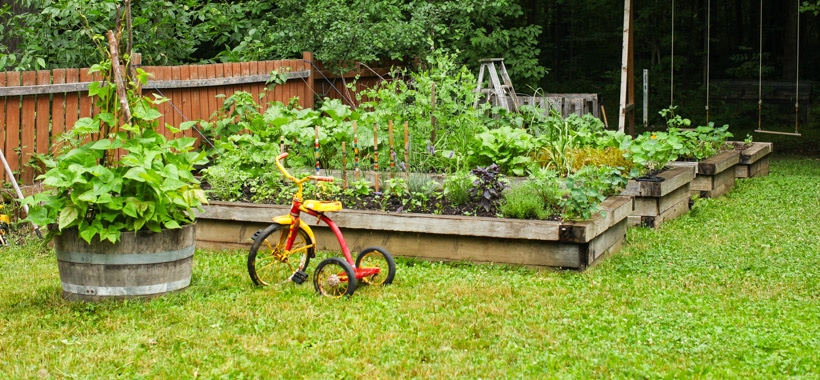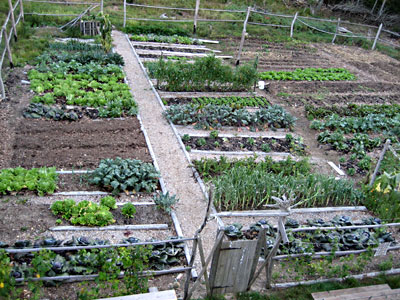Reveal the Secrets to Creating a Effective and stunning Gardening Area
Creating a gorgeous and productive gardening space is not just a matter of growing blossoms and veggies; it needs a tactical technique that includes numerous vital elements. From picking the right area based on sunlight and soil type to thoughtfully making your layout and picking appropriate plants, each decision plays an essential role in the success of your yard.
Picking the Right Location
Selecting the ideal location for your yard is crucial to its success and total visual appeal. The primary step in this process involves examining sunlight exposure, as the majority of plants call for a minimum of 6 hours of straight sunshine daily (Homestead Gardening). A south-facing yard typically receives one of the most light, while shaded locations can impede development and blooming
Additionally, take into consideration dirt top quality and drain. Well-draining soil is vital to protect against waterlogged roots, which can bring about plant diseases. Performing a soil test can supply useful information pertaining to pH degrees and vitamins and mineral material, allowing you to amend the dirt accordingly.
Moreover, distance to water sources is another element to evaluate - Homestead Gardening. Having very easy accessibility to a tube or watering system can streamline the watering process and urge constant plant treatment. Wind protection is also essential; placing your garden near structures, such as walls or fencings, can shield it from severe winds that may damage delicate plants
Finally, think about availability for upkeep and harvesting. A well-placed yard permits practical access, making certain that you can quickly often tend to your plants without triggering undue stress or disruption. Thoughtful location selection lays the structure for a prospering garden.
Selecting Plants Wisely
When selecting plants for your yard, it's necessary to take into consideration factors such as climate, soil problems, and personal choices to guarantee a effective and harmonious space. A thorough understanding of your neighborhood climate will lead you in choosing plants that grow in your certain setting. Selecting drought-resistant selections is advantageous in dry regions, while moisture-loving varieties might be more ideal for areas with high rains.
Soil conditions are equally vital; carrying out a soil examination can disclose pH levels and nutrient material, allowing you to select plants that will flourish. Native plants are commonly an exceptional selection, as they are usually well-adapted to neighborhood dirt kinds and call for much less maintenance.
Furthermore, consider your gardening goals. Are you aiming for an ornamental display, a vegetable garden, or possibly a mix of both? This will certainly affect your selections substantially. Finally, reflect on your personal preferences-- choosing plants that reverberate with your aesthetic tastes will boost your satisfaction and commitment to preserving your yard. By meticulously reviewing these elements, you can create a successful and diverse plant choice that raises your horticulture experience.
Designing Your Yard Layout
With an attentively chosen plant option in hand, the following action is to develop a yard design that optimizes both elegance and functionality. Begin by evaluating the available space, taking into consideration variables such as color, wind, and sunlight patterns. A tactical format needs to incorporate different zones, consisting of areas for planting, pathways, and potentially seating.
Begin with bigger plants or centerpieces, such as trees or high perennials, put tactically to develop aesthetic interest. Layer smaller sized plants in front to improve deepness and appearance. Consider the development practices of your chosen plants; taller ranges must be positioned at the back or center of beds, while shorter ones can line the sides.
Incorporating pathways not only facilitates gain access to for upkeep but likewise invites exploration. Usage products that match the garden's overall aesthetic, whether timber, crushed rock, or have a peek at this website stone chips.
Additionally, believe about seasonal changes and exactly how your format will look throughout the year. Including evergreens alongside seasonal flowers can make certain year-round beauty. Ultimately, a properly designed yard design harmonizes the all-natural charm of plants with useful considerations, resulting in a space that is both welcoming and effective.
Enhancing Soil Wellness

To boost dirt health and wellness, begin by performing a dirt examination to evaluate pH degrees, nutrient material, and soil appearance. Incorporate organic matter such as garden compost, well-rotted manure, or leaf mold to boost soil structure, water retention, and microbial task.
Mulching is an additional effective technique; it not only preserves dampness yet additionally reduces weeds and progressively improves the soil as it damages down. Preventing excessive tillage is critical, as it can disrupt dirt framework and damage valuable organisms. Instead, adopt no-till or very little husbandry practices to preserve dirt honesty.

Preserving Your Garden Properly
A properly maintained garden provides satisfaction and performance, requiring constant focus to guarantee that plants flourish and the landscape stays inviting. Reliable garden maintenance involves a number of key techniques that improve the health of your plants and the total aesthetic of your area.
Regular watering is critical; nevertheless, it is important to customize your watering timetable based on the specific needs of your plants and local environment problems. Mulching can help retain wetness, reduce weeds, and manage dirt temperature level. Additionally, timely weeding avoids competitors for resources and nutrients, making certain that your plants prosper.
Trimming is one more crucial task. It urges healthy and balanced growth, gets rid of diseased or dead branches, and shapes plants read more to keep an enticing structure. In addition, keeping track of for conditions and pests is crucial; early discovery and treatment can save your plants from considerable damage.
Fertilization needs to be implemented thoughtfully, using natural choices whenever feasible to promote long-lasting dirt health and wellness. Lastly, seasonal tasks such as growing, separating perennials, and getting ready for winter months will certainly ensure your garden remains dynamic year-round. By following these practices faithfully, you can grow a yard that is both productive and lovely.
Conclusion
Selecting an appropriate area with sufficient sunshine, picking appropriate plants, developing an aesthetically pleasing design, enhancing dirt health and wellness, navigate to these guys and making sure routine maintenance are necessary parts. By integrating these practices, one can grow a prospering garden that not just improves the landscape yet also advertises environmental equilibrium and sustainability.
From picking the right place based on sunlight and soil kind to attentively making your design and selecting ideal plants, each choice plays an essential role in the success of your garden. Well-draining soil is essential to protect against waterlogged roots, which can lead to plant diseases.When picking plants for your yard, it's vital to take into consideration factors such as environment, soil conditions, and personal preferences to ensure a harmonious and productive area. Ultimately, a properly designed yard layout harmonizes the natural appeal of plants with useful considerations, resulting in a space that is both inviting and effective.
